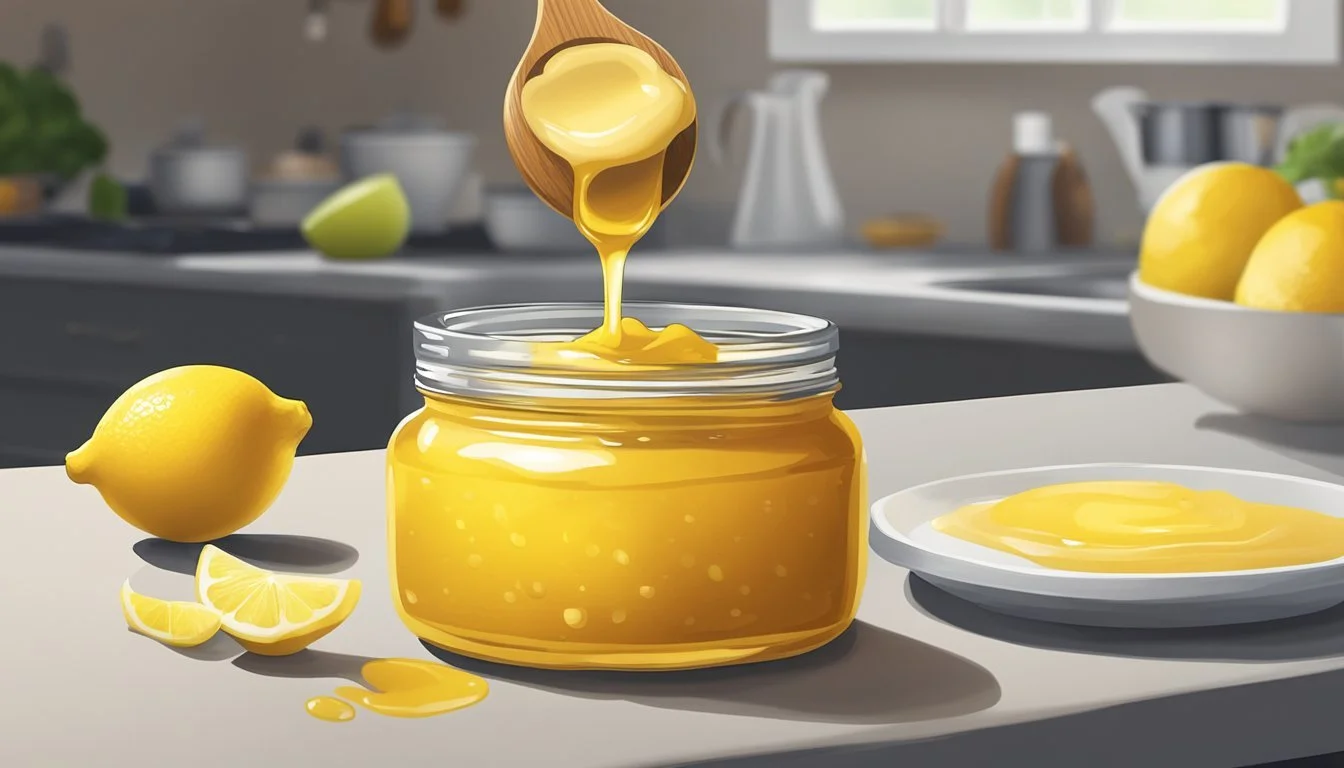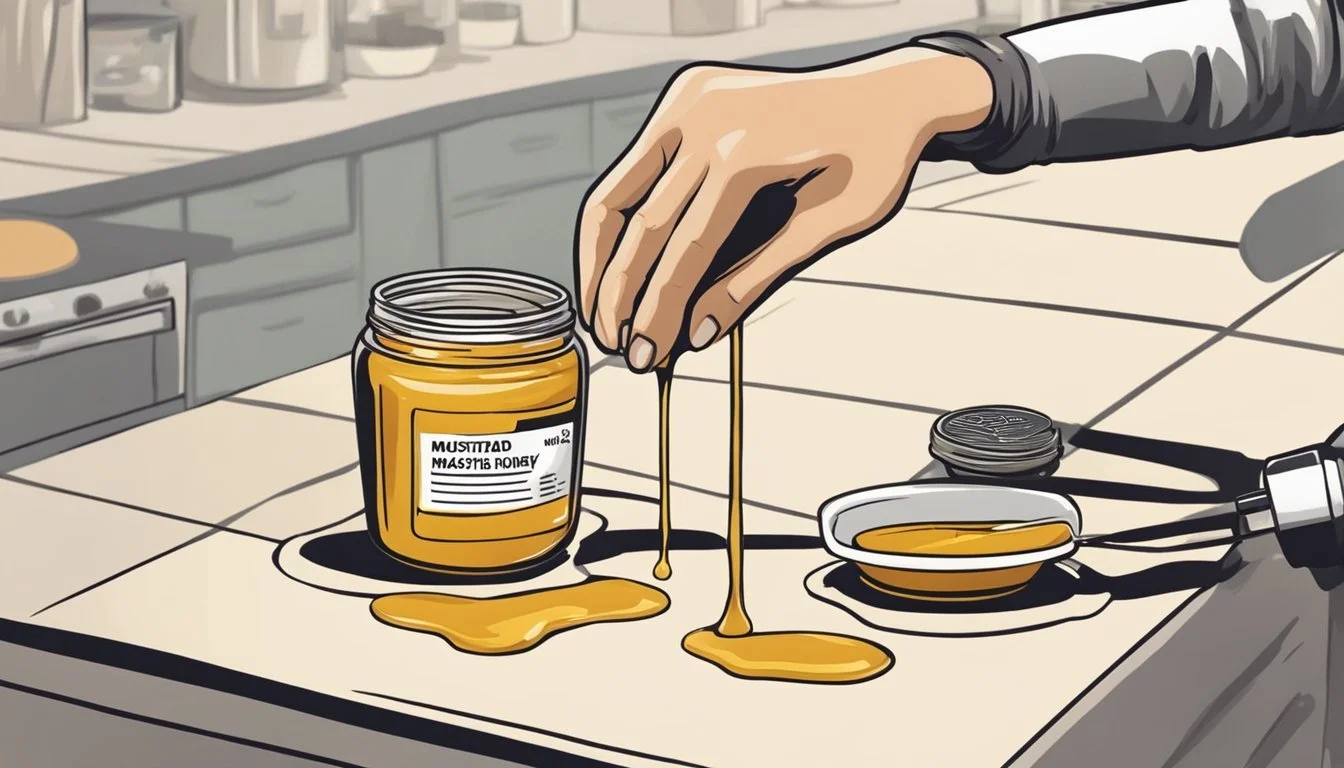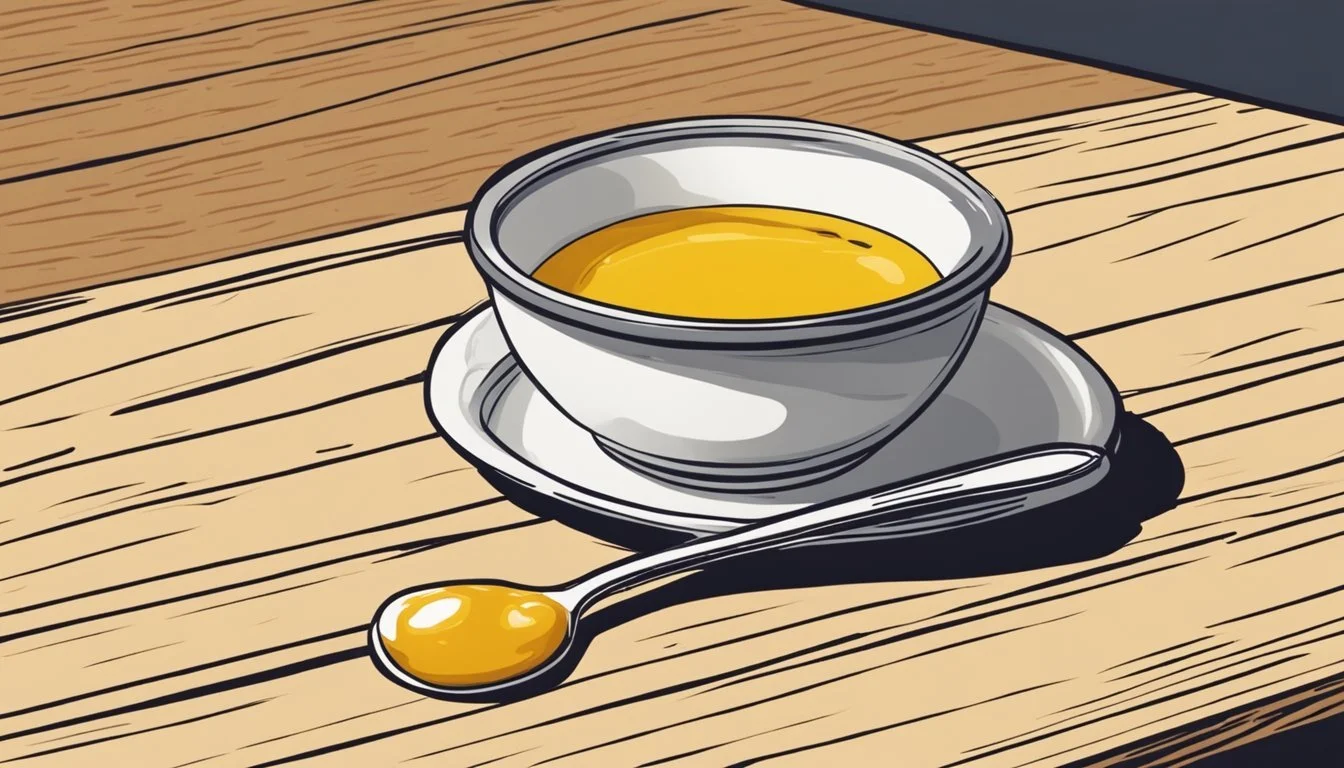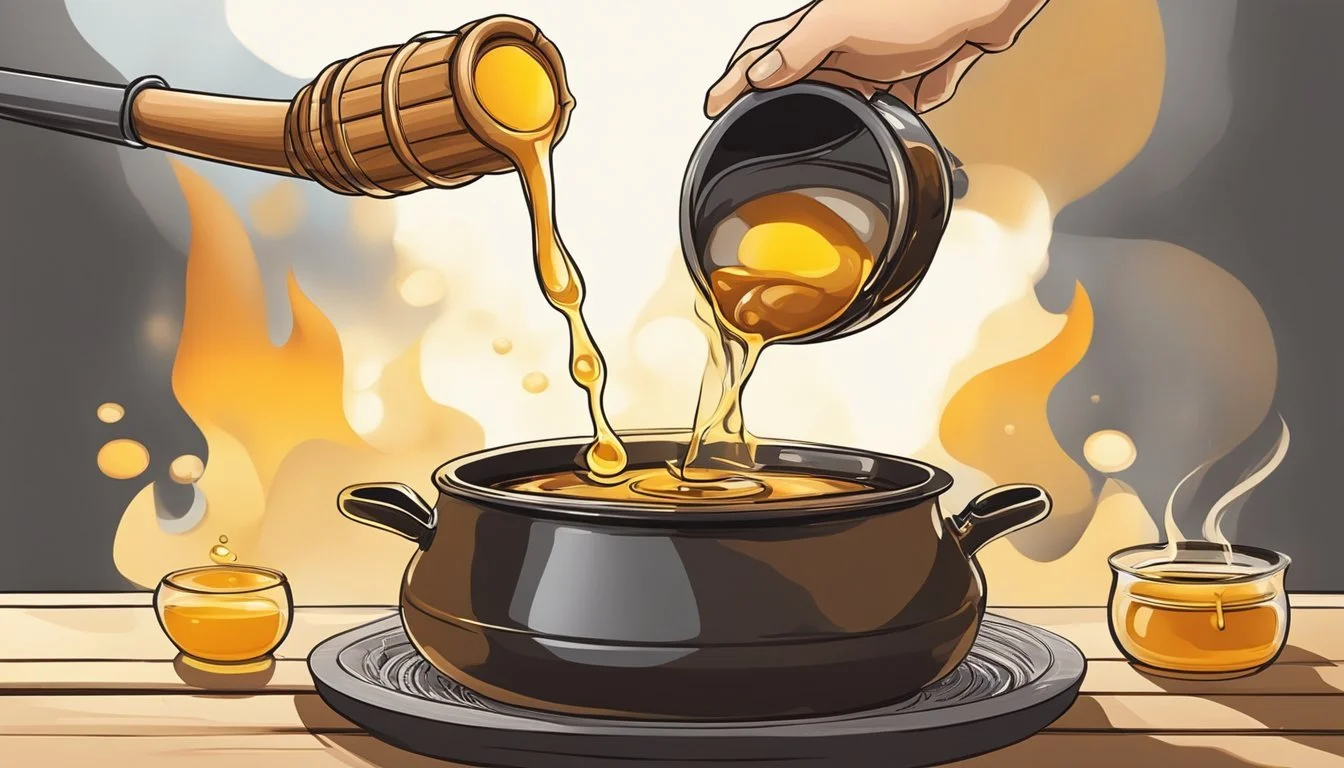Saving Burnt Honey Mustard
Expert Tips for Restoring Flavor Balance
Honey (What wine goes well with honey?) mustard is a beloved condiment known for its perfect blend of sweetness and tanginess. From the versatility in its uses to its bold flavor profile, it can easily enhance the taste of many dishes. However, sometimes the cooking process doesn't go as planned, and honey mustard can become burnt, leading to a bitter taste that overpowers its natural tanginess. This issue can transform a dish from delightful to disappointing, but there are effective ways to save and restore the balance of flavors in burnt honey mustard.
When honey mustard is exposed to excessive heat, the sugars within the honey caramelize too much, resulting in bitterness, and the mustard can become overly concentrated, intensifying its sharpness. To correct this, one must reduce the bitterness and balance the tanginess without undermining the original taste desired. This can be achieved by incorporating additional ingredients that can both soothe the bitterness and complement the existing flavors. Through careful adjustments, the original character of the honey mustard can be preserved, even after a mishap in preparation.
Restoration techniques often include the addition of sweetening agents such as more honey or sugar, which can counterbalance the bitterness. Dairy products or mild-tasting condiments, like mayonnaise or yogurt, can be blended in to mellow the sharpness, while still maintaining the essential honey mustard tanginess. Each adjustment method works to ensure that the final product is neither too bitter nor lacking in its characteristic zest, allowing for a successful culinary recovery.
Understanding Honey Mustard
Honey mustard is a versatile condiment marrying the sweetness of honey with the tang of mustard seed to create a flavor that enhances a variety of dishes. The balance of taste and texture can vary, but the essential appeal lies in its richness and the interplay of sweet and sharp notes.
History and Popularity
Honey mustard has enjoyed popularity as a condiment for many years. Originally, mustard itself was used in ancient cuisines, but the addition of honey to create honey mustard brought a new dimension to this classic sauce. Its usage spans a myriad of cultures, adapting to the taste preferences of regions, showing its versatility as both a dip and a dressing.
Fundamental Ingredients
Two main ingredients constitute the base of honey mustard: honey and mustard. The type of mustard can vary, with options ranging from Dijon mustard, known for its creamy texture and sharp taste, to yellow mustard, which provides a milder tang. Some recipes also incorporate mayonnaise to add creaminess. Here's a simple list of what you might find in honey mustard:
Honey
Mustard (Dijon, yellow, or others)
Mayonnaise (sometimes included)
Nutritional Profile
The nutritional profile of honey mustard can vary based on the proportions and types of ingredients used. Below is a table reflecting an approximation of its nutritional content per tablespoon (accounting for variations in recipes):
Nutrient Approximate Content Calories 50-70 Fat 2-5g Saturated Fat 0-1g Trans Fat 0g Cholesterol 0-5mg Sodium 120-150mg Carbohydrates 6-10g Fiber 0g Sugar 5-6g Protein <1g Potassium <1% of DV Vitamin A <1% of DV Vitamin C <1% of DV Calcium <1% of DV Iron <1% of DV
Common Uses of Honey Mustard
Honey mustard's application ranges from dip, dressing, condiment, to spread, and even marinade for various recipes. It's commonly paired with items like chicken, sandwiches, salads, and pretzels. The sweet and savory nature of honey mustard makes it especially popular as a blend that can elevate the flavor of both raw and cooked dishes.
Identifying Burnt Honey Mustard
The tell-tale signs of burnt honey mustard are unmistakable in both taste and texture. Recognizing these symptoms is essential to prevent an inadequately flavored dish.
Signs of Overcooking
Color Change: Honey mustard that has been overcooked typically shifts from its original golden or creamy hue to a darker brown shade.
Reduced Viscosity: The sauce may exhibit a thicker consistency, moving sluggishly when poured, as opposed to its commonly smooth and pourable texture.
Effects on Flavor and Texture
Increased Bitterness: The taste profile of honey mustard may experience a noticeable increase in bitterness when burnt.
Altered Texture: Aside from changing viscosity, the texture may become uneven, with the sauce possessing a grainy or overly thick quality that deviates from its expected silkiness.
Salvaging Techniques
In salvaging burnt honey mustard, the goal is to mitigate bitterness and rebalance tanginess without compromising the original flavor profile. The following techniques focus on balancing and enhancing the flavors through precise ingredient adjustments.
Balancing Flavors
One can counteract undesired bitterness in honey mustard by introducing elements that add sweetness or modify tanginess. Sugar or honey can be added sparingly to introduce sweetness, thereby reducing the perception of bitterness. Adjusting the amount of vinegar can also help; too much vinegar might contribute to bitterness and overpowering tanginess. A tablespoon of lemon juice offers citric acid that can cut through the bitterness while maintaining the mustard's zing.
Sweetness Adjustment
Add 1 teaspoon of honey; taste and incrementally increase if necessary.
Sprinkle in small amounts of sugar, stirring and tasting to avoid over-sweetening.
Tanginess Modulation
If too tangy, reduce the amount of vinegar used in the next batch or add more water to dilute.
Introduce a tablespoon of lemon juice for a bright, fresh note that complements the tanginess.
Adding Complementary Ingredients
Additional ingredients that harmonize with honey mustard can rescue the sauce from bitterness. Olive oil can mellow out intense flavors when whisked into the mixture. Greek yogurt adds a creamy texture and mild tang that can also help balance sharpness. To tweak the tangy aspect, consider different types of vinegar, like apple cider vinegar, which offers a softer tang compared to white vinegar. For those who appreciate a subtle kick, a pinch of cayenne pepper introduces heat that can distract from bitterness.
Whisk in a small amount of olive oil for a smoother consistency.
Incorporate Greek yogurt for creaminess, starting with a tablespoon.
Tanginess and Heat Alterations
Replace some vinegar with apple cider vinegar for a milder tang.
Add a light sprinkle of cayenne pepper; adjust according to heat preference.
Preparation Revisions
In attempting to salvage a batch of burnt honey mustard, one needs to assess the extent of the damage and make precise adjustments to the recipe. Careful attention to ingredient balance and cooking techniques can restore flavor and remove unwanted bitterness.
Recipe Adjustments
When honey mustard has burnt and turned bitter, it may be possible to correct the imbalance by readjusting the ingredients. One should:
Add Sweetness: Incorporate a small amount of honey to neutralize the bitter taste.
Increase Acidity: Introduce a more robust acidic component, like apple cider vinegar, to balance the tanginess.
Introduce Creaminess: A touch of mayonnaise or Greek yogurt can help smooth out the flavors and mask minor scorching.
It's essential to combine these additional ingredients with a whisk until the mixture is well combined. The cook must taste repeatedly, ensuring each addition moves the flavor closer to the desired result.
Temperature and Cooking Time
The cook should also examine and adjust the cooking process to prevent further issues:
Lower Temperature: A moderate temperature should be used to avoid burning. Honey burns at around 108°C (226°F), so maintaining the temperature below this point is crucial.
Shorten Cooking Time: If the recipe calls for cooking, it's often better to mix the ingredients without applying heat. If heating is necessary, the cook should do so just until the ingredients are combined and heated through, minimizing the time on the stove.
By adhering to these preparation revisions, a cook may successfully rescue a batch of honey mustard that has started to turn due to overcooking or burning.
Recipe Enhancements
The key to revitalizing a burnt honey mustard sauce lies in careful adjustments and thoughtful ingredient additions that can mask any unpleasant bitterness while enriching the overall flavor profile.
Introducing New Elements
Ingredients to Consider:
Sweeteners: Adding a touch of maple syrup can introduce a new dimension of sweetness that can help mask the burnt taste. This natural sweetener brings a smooth flavor that complements honey mustard.
Acidic Components: Incorporating a bit more lemon juice or apple cider vinegar found in some honey mustard recipes can help balance out the bitterness.
Creamy Additions: A suggestion might be to whisk in a small amount of Italian dressing for a creamy texture and a burst of herbs that can neutralize the burnt flavor.
Affiliate Partner Recommendations: The readers could be directed, via affiliate links, to high-quality ingredients that can aid in the recovery of the sauce.
Expert Knowledge:
Experts often recommend adding a pinch of spices like a smoked paprika to introduce a complex, smoky sweetness that can divert attention from any scorched notes.
Using herbs like dill or tarragon can subtly enhance the sauce without overpowering its intended flavor.
Improving the Recipe
Variations:
Spice Adjustments: Tweak the spices, depending on the severity of the burnt flavor; a sprinkle of garlic or onion powder can provide a savory lift.
Herb Infusion: Fresh herbs like parsley or chives can introduce a fresh, aromatic quality that might soften the acrid notes.
Reviews and Ratings:
Including a review system allows users to share their successful modifications, thereby aiding others in their culinary journey.
A rating feature lets users quickly identify the most helpful suggestions for amending the recipe.
Cookbook Contributions:
Annotated recipes in cookbooks often contain valuable tips for recipe correction, including how to salvage a burnt sauce. Reviewing these tips could provide additional insights.
A carefully curated cookbook section on sauces, featuring readers' tweaks and fixes, could become an invaluable resource for both novice and experienced cooks alike.
In adhering to these guidelines, one can confidently rescue their honey mustard sauce, ensuring its full bodied flavor is maintained to complement any dish.
Serving Suggestions
After successfully reviving your honey mustard sauce, one can enhance the dining experience by wisely pairing it with appropriate dishes that complement its balanced flavor profile.
Ideal Pairings
For a delightful experience, consider these precise pairings:
Vegetables: Steamed or grilled vegetables, particularly carrots and asparagus, can be drizzled with honey mustard to add a zesty and slightly sweet note.
Sandwiches: Spread the improved sauce on sandwiches, using it to moisten and add richness to roasted turkey or ham sandwiches.
Chicken Tenders: Chicken tenders dipped in honey mustard provide a classic combination of crispy textures and tangy flavors.
Fries: Both French fries and sweet potato fries can be elevated when paired with this sauce, making it a perfect dip that adds a sweet contrast to the salty snack.
Potatoes: Roasted or mashed potatoes benefit from a spoonful of honey mustard, as it cuts through the richness with its tanginess.
Pretzels: Soft pretzels dipped in honey mustard sauce become an irresistible snack with a satisfying balance of chewy and creamy textures.
Wraps: A drizzle of honey mustard inside a chicken or veggie wrap can greatly enhance the overall flavor, making every bite more complex and enjoyable.
Storage Solutions
Preserving the quality of homemade honey mustard is crucial for maintaining its flavor and safety. Two key aspects dictate the method of storage: ensuring freshness and understanding the product's shelf life expectancy.
Preserving Freshness
To preserve the freshness of honey mustard, it must be stored properly. After preparation, one should immediately transfer the condiment into an airtight container to minimize exposure to air, which can lead to flavor degradation and contamination. The container should then be placed in the refrigerator. Maintaining a consistent temperature between 35°F and 40°F (1.7°C and 4.4°C) is essential for slowing down bacterial growth and preserving the condiment's original taste profile.
Shelf Life Expectancy
When stored under optimal conditions, homemade honey mustard can have a satisfactory shelf life. While commercial honey mustard often contains preservatives that extend its shelf life significantly, homemade versions generally last:
Unopened: Up to one year in the pantry, provided it's kept away from heat and sunlight.
Opened: Approximately one month when refrigerated in an airtight container.
To ensure homemade honey mustard's longevity, one should always use clean utensils when serving it to prevent cross-contamination, which can lead to a reduced shelf life.
Dietary Considerations
When adapting honey mustard recipes to meet dietary needs, it’s essential to consider ingredient substitutes that maintain the intended flavor profile while adhering to vegan, vegetarian, dairy-free, or gluten-free requirements.
Making Honey Mustard Vegan or Vegetarian
Honey mustard traditionally includes honey, which is not vegan due to it being an animal product. Vegans can substitute honey with agave nectar or maple syrup to replicate the sweetness. Vegetarians, while typically okay with honey, can also use these alternatives if they prefer. Mustard is generally vegan and vegetarian-friendly, but one should always check labels for hidden ingredients.
Vegan Honey Mustard Alternatives:
Agave Nectar
Maple Syrup
Allergy-Safe Alternatives
Allergens commonly found in honey mustard include mustard seeds and sometimes gluten depending on the type of vinegar or additives used. A dairy-free or gluten-free honey mustard can be easily obtained by ensuring that all individual ingredients are free of these components.
Gluten-Free Considerations:
Use certified gluten-free mustard and vinegar.
Dairy-Free Considerations:
Honey mustard is typically dairy-free, but vigilance is necessary to ensure no cross-contamination or dairy-derived additives are present.
Nutrition Information
When discussing honey mustard, it's beneficial to consider the nutritional aspects of this popular condiment. Honey mustard, typically a blend of honey and mustard, can offer varying nutritional profiles depending on the ingredients and quantities used.
Typical Nutritional Values per Teaspoon (6g) of Honey Mustard:
Calories: 10
Fat: 0g (0% DV)
Saturated Fat: 0g (0% DV)
Carbohydrates: Typically, honey mustard contains about 1-2g of carbohydrates per serving, with sugars from honey contributing to this count.
Nutritional Benefits:
Honey mustard can be a low-fat option for dressing salads or as a dipping sauce.
The condiment contains trace amounts of vitamins and minerals present in honey and mustard seeds.
Considerations:
Honey mustard is relatively low in calories, making it a suitable choice for those monitoring their caloric intake.
Despite its benefits, honey mustard should be consumed in moderation, particularly by individuals managing their sugar intake due to the presence of honey.
Consuming honey mustard with vegetables can enhance the overall flavor and palatability of diets rich in nutrients. It's important to account for the condiment's nutritional values when calculating daily dietary intake.
Frequently Asked Questions
Can burnt honey mustard be saved and the bitterness removed?
Yes, burnt honey mustard can often be salvaged. One can dilute the bitterness by adding more of the base ingredients such as fresh honey and mustard.
What ingredients counteract bitterness in honey mustard?
Ingredients that can counteract bitterness include:
Sweeteners: Adding more honey or a pinch of sugar.
Acids: A splash of vinegar or lemon juice can help balance the bitterness.
How can I balance the tanginess in honey mustard?
Balance tanginess by adding:
Sweet elements: More honey or a bit of sugar.
Creamy components: A drop of mayonnaise or yogurt for a milder tang.
What should I do if my honey mustard is overly spicy?
To reduce spiciness, one can:
Add more honey or mustard.
Incorporate a dairy product like cream.
Is there a way to prevent honey from burning while making honey mustard?
Prevent burning by:
Cooking honey on a low heat.
Stirring continuously.
Using a heavy-bottomed pan for even heat distribution.
Final Thoughts
When attempting to save burnt honey mustard, the key is to first assess the level of burning. If it's only slightly scorched, they may be able to rescue the batch by removing the unburnt portion and discarding the burnt bits. For moderate burning, they can consider diluting the batch with additional ingredients.
To counteract bitterness, they should incorporate sweeteners like honey or sugar in small amounts, tasting as they go. A touch of acid, such as lemon juice or vinegar, can also help balance out the tanginess.
Here's a quick breakdown of possible adjustments that they can make:
Sweeteners:
Honey
Maple syrup
Acids:
Lemon juice
Apple cider vinegar
These adjustments should be made gradually, with careful tasting after each addition, as it's easier to add more than to correct an overcorrection.
Moreover, they must remember that honey's natural flavor and sweetness can enhance the mustard's complexity. Should the entire batch be unsalvageable, they can consider the experience a learning opportunity for perfecting future batches of honey mustard.
Finally, always document any changes made to the recipe for future reference. This ensures that successes can be replicated and mistakes avoided, allowing for continuous improvement in their culinary pursuits.












